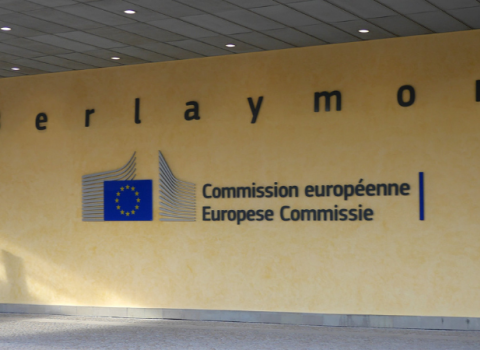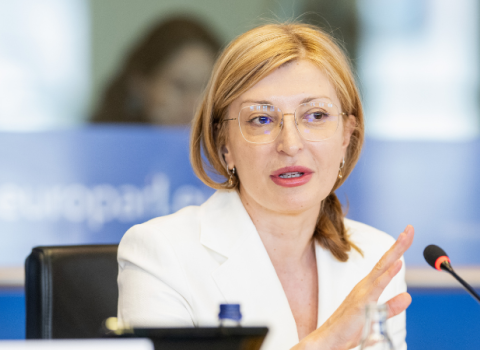The focus of EU-funded research is shifting from early academic work to applications that will have an impact in areas such as the green transition and digitisation. Universities are calling for clarity on the political priorities that are driving this shift

Horizon Europe is a new type of beast. While building on previous EU research programmes, it is doubling down on making an impact on major societal and technological challenges facing the bloc. Research stakeholders fear this shift will take money away from laboratory bench research and are calling on the European Commission to ensure it is clear which parts of the Horizon Europe pot impact-driven funding is coming from.
Last month, a group of university associations sent a letter to EU research commissioner Mariya Gabriel asking for more transparency on budget allocations, especially when it comes to big policy-driven projects such as the Chips Act, which is intended to make Europe less dependent on imported semiconductors, and the Health and Emergency Response Agency (HERA), formed in the wake of the COVID-19 pandemic.
Universities estimate close to €1 billion from the €95.5 billion Horizon Europe programme has so far been committed to the Chips Act, HERA, and hydrogen projects under the new EU strategy to wean the bloc off Russian gas. But it remains unclear which pots of money within the programme the €1 billion comes from.
The universities understand the importance of funding strategic programmes and are not opposed the priorities. But they want to know how the money travels around the various strands of Horizon Europe funding. The lack of transparency “creates a lot of uncertainty, and it’s hard to deal with a programme that is constantly changing,” says Tatiana Panteli, head of the Brussels office at the EuroTech Universities Alliance, the main author of the letter to Gabriel.
Dan Andrée, senior adviser at Stockholm Trio, an alliance of Stockholm’s three leading universities, says the research community agreed to the impact-driven approach in Horizon Europe. The new missions, for one, are oriented not at research per se but using it to tackle societal challenges such as cancer, climate adaptation and the degradation of soils. “But we have to be careful how far we go. Horizon Europe is a research programme,” he told Science|Business.
Andrée believes the shift away from research is not a major problem at the moment but he wants the Commission to start an open discussion on this. This is why the Stockholm Trio signed the letter to Gabriel. “It’s more of a sign to the Commission that they should pick up the discussion very early and plan the next strategic plan,” says Andrée.
The Commission did not immediately respond to requests for comment.
The Brussels mill
Some argue the lack of transparency is nothing new in Brussels’ complex policy environment. The seven year research programme takes policymakers years to shape, and every year the annual budget has to be agreed on in long negotiations between the Commission, member states and the European Parliament. At a more granular level, negotiations on the shape of the programme also continue throughout the years in strategic programme committees.
Thomas Estermann, director for governance, funding and public policy development at the European University Association (EUA), to which more than 800 universities belong, says understanding European budget allocations is a difficult task. With growing interest in the programme from different stakeholders, it’s even more challenging for the newcomers. And understanding the budget is key to shaping it.
Agreements on how to distribute the money at times are not as transparent as they could be, and while in the end negotiations follow the rules, outsiders may struggle to understand why certain decisions were made. Some of the money might come from margins or unspent funding pots. “There’s a lot of unclarity from the outside where these things come from and where they move to,” says Estermann.
At the same time, that’s just the way EU funding works. “It’s always been the case,” says Estermann. “It’s in the nature of the European budget, where money is allocated over a seven year period. It’s indeed difficult to strike the balance between keeping things [fixed] over seven years and adapting to things that might change in this seven year period.”
And the flexibility is necessary, he notes. If another pandemic struck in the next few years, the Commission must have the ability to shift money to address the emergency.
Muriel Attané, secretary general of the European Association of Research and Technology Organisations (EARTO), denounces the instability of the budget and admits the complex Brussels landscape may translate to a lack of transparency, especially from the perspective of research actors who are less familiar with the EU policymaking machine.
While Attané is not concerned with the money being allocated to top-down political priorities as such, she stresses the importance of keeping the overall budget high. If the impact-driven programme underdelivers, policymakers could end up allocating less money for research in the next seven-year programme.
Moving money
The letter sent to Gabriel by the universities calls for the online Horizon Europe dashboard which lists the details of the projects funded under the programme, to also provide figures on money allocation, including how the money has moved within the programme. “If that could be on the dashboard, it would be useful and the stakeholders could see it,” says Panteli.
Estermann agrees the budget should be complemented with a translation understandable to all stakeholders. But he’s unsure a dashboard would do the trick. Just looking at the data is not enough; the challenge is understanding what to do with it. One way this could be provided is through an independent evaluation, similar to the reports produced by the European Parliament’s research services, Estermann suggests. “I think you need someone who does the work explaining it in a narrative form.”
But making more data publicly available may still leave questions about the way decisions are made.
Research ministers briefly touched upon the topic during a competitiveness Council meeting in November 2021. Many member states expressed support for using R&I to achieve societal goals but noted that this does not mean Horizon Europe can be exploited like a piggy bank for political priorities. Others also pointed to the importance of not undermining basic research in the crusade for societal change.
The main challenges to be tackled, such as the green transition and reducing Europe’s dependence on foreign technologies, were agreed upon during the making of the programme, ministers noted. But if new issues arise, “It’s important to discuss these new initiatives with the member states as early as possible,” said the French research minister Frédérique Vidal.
Tracking spending is not just about transparency but also outcomes. Summarising the debate, Slovenian minister Simona Kustec, who led the November Council discussion, also stressed the need for proper governance and monitoring structures that would ensure coordination. “This is the only way we can see if the results will be achieved,” said Kustec.
Sweden, Andrée notes, believes that there should be more transparency in the discussion. This doesn’t mean the Commission working with universities directly, but holding discussions on the appropriate way to allocate Horizon Europe funding to different initiatives in the strategic programme committee, which brings together representatives of member states, associated countries and the Commission.





 A unique international forum for public research organisations and companies to connect their external engagement with strategic interests around their R&D system.
A unique international forum for public research organisations and companies to connect their external engagement with strategic interests around their R&D system.